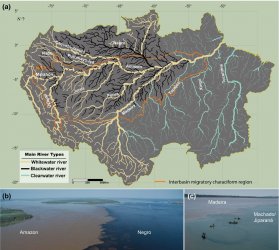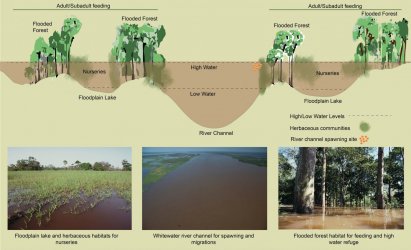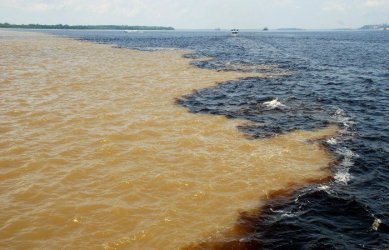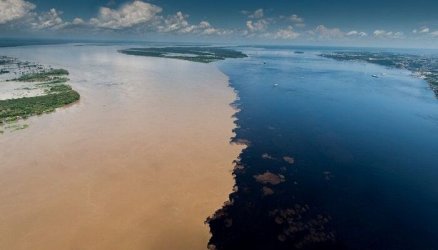Yes and no. The species occurs in certain tributary streams of the Essequibo River. These streams are, so far as I know, in heavily forested areas. The South American rainforest goes through two very different seasons each year; the wet or rain season which lasts roughly six months, and the dry season which is also six months. The rains when they suddenly start are heavy and last for weeks and the water courses rapidly rise and flood the surrounding forest, in places more than 12 feet deep. The fish move into these flooded forests to spawn because food (insects, larvae, worms, fruits, etc) is plentiful, they have lots of cover to protect the eggs/fry, and plenty of space so more will survive.
So you could do a relatively-authentic aquascape replicating the streams (floating plants to replicate the forest canopy cover, no lower plants but dried leaves, branches, wood chunks on sand), or you could do a "flooded forest" aquascape which would have sand, wood (standing chunks can represent tree trunks), branches, dried leaves, and substrate-rooted plants. Floating plants still for shade.
This citation is from Seriously Fish's profile of this species:
If you really want to see it at its best, you could set up a
biotope tank. Use a
substrate of
river sand and add a few driftwood branches (if you can’t find driftwood of the desired shape, common beech is safe to use if thoroughly dried and stripped of bark) and twisted roots. A few handfuls of dried leaves (again beech can be used, or oak leaves are also suitable) would complete the natural feel. Allow the wood and leaves to stain the water the colour of weak tea, removing old leaves and replacing them every few weeks so they don’t rot and foul the water. A small net bag filled with
aquarium-safe
peat can be added to the
filter to aid in the simulation of black water conditions. Use fairly dim lighting. Under these conditions the true beauty of the fish will be revealed.

www.seriouslyfish.com
www.seriouslyfish.com







